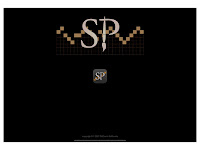Now that all 12 tonalities could be used a lot of weight shifted into exploring all these new possibilities. Instruments were designed and redesigned and a lot of training material for musicians was published that focussed on fluency in all 12 keys. This is one of ScalePlay's core functionalities, to allow the creation of scale patterns like 1-3-5-4-5-4-5-4 with graphic tools and then vertically transpose these pattern to have them start on the second note of a scale or maybe the fourth for example. The grid on the left hand is the pattern and the grid on the right hand determines how far up or down a pattern is shifted. Those two components are then be wrapped in chord components and several chord components finally constitute a composition or song form.
This may sound like a fairly simple thing to do all in all and maybe not remarkable in whatever outcome one might expect of it, but in addition to generating interesting play-along etudes for improvising musicians ScalePlay can also be used to help writing music. Entire songs even, because it is so easy to dial in a chord sequence just by starting a bass line and then applying different scale types. A performance aspect exists as well where entire sequences can be triggered by touch if so desired, to drive external synth modules.
ScalePlay 1.5 now available. It includes quite a few updates and fixes. Nothing spectacular, but still necessary layout and general compatibility adjustments. ScalePlay also received a dark mode compatibility overhaul and there was some work on the engine itself.




